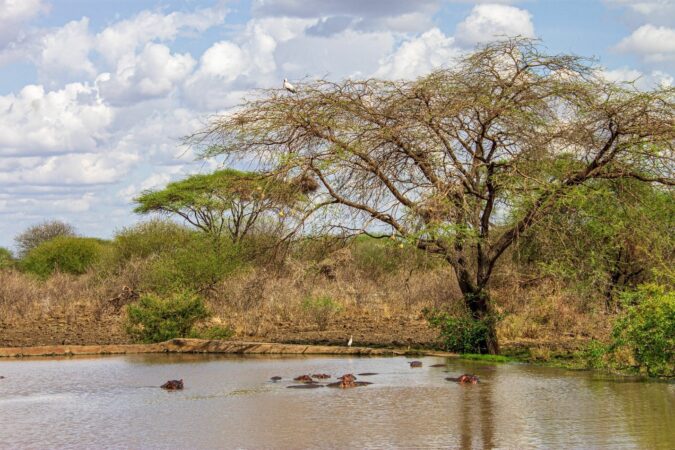The savannah, characterized by its vast open spaces, sparse tree cover, and abundant grasses, is one of the most iconic and vital ecosystems on the planet. Stretching across continents, from the African savannahs to the grasslands of South America and the prairies of North America, these biomes support a diverse array of plant and animal species. The conservation of savannah vegetation is critical, as it not only maintains the ecological balance but also supports the livelihoods of countless wildlife species. Stephen Wentzel emphasizes that understanding and protecting its unique plant life is essential for the health of the entire savannah ecosystem.
The Diversity of Savannah Vegetation
Savannahs are primarily defined by their grasses, which dominate the landscape and provide the foundational layer of the ecosystem. These grasses, such as the tall elephant grass (Pennisetum purpureum) in Africa and the resilient blue grama (Bouteloua gracilis) in North America, are specially adapted to survive in environments with seasonal rainfall and frequent fires. They are able to regenerate quickly, providing a reliable year-round food source for herbivores.
In addition to grasses, savannahs are home to a variety of shrubs and trees that dot the landscape. Iconic species such as the acacia tree (Acacia spp.) in Africa and the eucalyptus tree (Eucalyptus spp.) in Australia play crucial roles in their ecosystem. These trees offer shade, shelter, and additional food sources for wildlife. Their deep root systems help to stabilize the soil and maintain water cycles, making them integral to the savannah’s health.
The Role of Savannah Vegetation in Supporting Wildlife
The plant life in savannahs is not just a backdrop for the wildlife; it is the lifeline of the ecosystem. Grazing herbivores, such as zebras, wildebeests, and antelopes in the African savannahs, depend heavily on the grasses for their primary diet. These herbivores, in turn, support a range of predators, including lions, cheetahs, and hyenas. The health of these populations is directly linked to the availability and quality of the grasses they feed on.
Moreover, many savannah plants have evolved to offer additional resources. The baobab tree (Adansonia spp.), for instance, provides not only food through its nutritious fruit but also water stored in its massive trunk, which becomes crucial during dry seasons. Birds, insects, and small mammals rely on the flowers, fruits, and seeds of various savannah plants, highlighting the intricate web of dependency within the ecosystem.
Threats to Savannah Vegetation
Despite their resilience, savannah ecosystems are facing numerous threats that can jeopardize their delicate balance. One of the primary threats is land conversion for agriculture. As human populations grow, there is increasing pressure to convert savannah lands into farmland or pastures. This leads to habitat loss and fragmentation, severely impacting the plant and animal species that depend on these areas.
Another significant threat is climate change. Changes in rainfall patterns, increased temperatures, and more frequent and intense droughts can alter the composition of savannah vegetation. Some plant species may struggle to survive under new conditions, leading to shifts in the ecosystem that disrupt the entire food chain.
Additionally, invasive species pose a threat to native savannah plants. Non-native plants can outcompete indigenous species for resources, leading to declines in native biodiversity. This, in turn, affects the wildlife that has co-evolved with the native vegetation, potentially leading to declines in animal populations.
Conservation Efforts and Strategies
Conserving savannah vegetation requires a multifaceted approach that addresses the various threats these ecosystems face. Protected areas and national parks are essential for preserving large tracts of savannah and their associated flora and fauna. In Africa, places like the Serengeti National Park and the Kruger National Park are prime examples of how protected areas can safeguard savannah ecosystems.
Restoration efforts are also crucial. Rehabilitating degraded lands by reintroducing native plants and controlling invasive species can help restore the natural balance. Community involvement is key in these efforts, as local populations often depend on savannahs for their livelihoods. Educating and engaging communities in sustainable practices ensures that conservation efforts remain both effective and equitable. Moreover, addressing climate change is vital for the long-term health of savannahs. This involves global efforts to reduce greenhouse gas emissions, as well as local initiatives to build resilience in savannah ecosystems. For instance, implementing sustainable grazing practices and protecting water sources can help mitigate some of the impacts of climate change.
The Importance of Research and Education
Ongoing research is essential for improving our understanding of the complex savannah ecosystems and how to best to protect them. Studies on plant physiology, species interactions, and ecosystem responses to environmental changes provide valuable insights that can guide conservation strategies. Additionally, fostering a greater appreciation for savannahs through education can help garner public support for conservation efforts.
Educational programs that highlight the importance of savannah vegetation and its role in supporting wildlife can inspire a new generation of conservationists. By raising awareness about the threats these ecosystems face and the actions needed to protect them, we can ensure that savannahs continue to thrive.
Savannah vegetation is a cornerstone of some of the most biodiverse and ecologically significant regions on Earth. Protecting this plant life is essential for maintaining the health and stability of these ecosystems. Through conservation efforts, restoration projects, and education, we can safeguard the unique and invaluable savannahs for future generations. The survival of countless wildlife species depends on the health of savannah vegetation, making it imperative that we act to preserve these vital landscapes.
